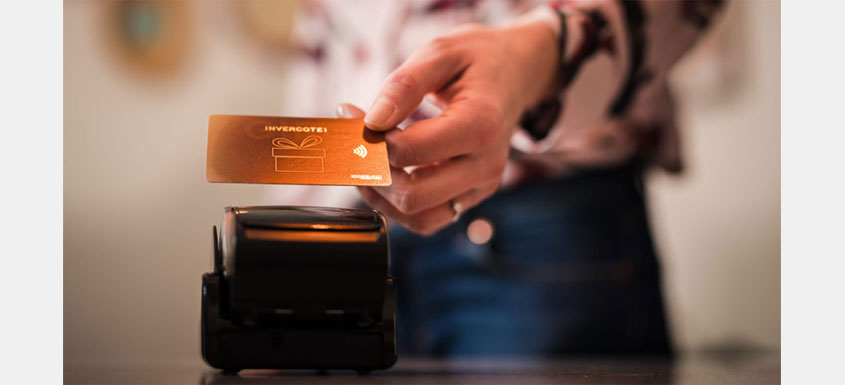Iggesund’s paperboard card solution combines high functionality with sustainability, reducing carbon emissions by 95 per cent compared to a traditional plastic card.
Every year, billions of smart cards are produced for use as hotel keys, public transit passes, gift cards and much more. According to the International Card Manufacturers Association (ICMA), 37.1 billion cards were produced in 2019, the majority of which were fossil-based plastic cards. These cards are often used for a short time and eventually end up in the environment or are incinerated, emitting toxic vapours in the process.
Now, Iggesund together with partners, has developed a way to produce plastic free cards with contactless functionality. Its paperboard solution uses 100 per cent natural materials and is therefore fully recyclable.
Based on wood pulp the paperboard card can reduce carbon emissions by 95 per cent compared to fossil-based plastic cards. Using Iggesund’s official figures, a paperboard card generates 0.55 grams of CO2 per card, whilst a card made from PVC generates 11.4 grams of CO2 per card.
Smart cards normally contain a chip that determines their function and an antenna that receives and transmits information. These functions have traditionally required both plastics and aluminium. However, a state-of-the-art printing technique, where the antenna is printed between two Invercote paperboard sheets, eliminates the need for both plastic and aluminium.
“Conductive ink is used instead of aluminium which makes it possible to recycle the card when it no longer works. The card can eventually be turned into paper pulp,” says Thomas Janson, Business Development Manager at Iggesund Paperboard.
Iggesund’s Invercote Duo is produced at a mill that is certified to ISO 14001 environmental management standards and ISO 9001 quality management standards. It also sources its raw materials from forests that plant more trees than it harvests.
And thankfully, being sustainable doesn’t mean you have to sacrifice quality. Iggesund’s paperboard solution provides a premium look and feel similar to plastic and is highly durable, says Janson. “It’s about using the right technology, the right material and the right converting. Not only do you feel the quality in your hand, but you also get a card that lasts while it's in use.”
For more information: www.iggesund.com/cards
Source: Iggesund













